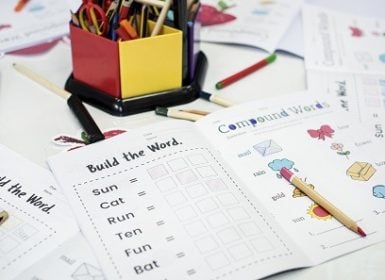
You may hear the terms expressive and receptive language skills in relation to children’s speech and language development.
Expressive language is the ability to request objects, make choices, ask and answer questions and describe events, using verbal and non-verbal language, writing and vocalisations. Receptive language skills refers to the ability to receive and understand spoken language.
What are Receptive Language Skills?
Receptive language skills allow children to gain information, decipher that information correctly and effectively communicate with others.
Receptive language skills include:
- Following instructions (simple and multi-step)
- Understanding language concepts (ie. big/small, left/right, in/on)
- Understanding words and sentences
- Listening to and interpreting questions, stories and conversational information.
Strong receptive language skills are important for education, as students are given many verbal and written instructions by their educators or teachers each day. For example, a teacher may ask a child to ‘get your hat, find your lunchbox and water-bottle and go outside into the playground’. This common instruction contains three steps:
- Get your hat
- Find your lunch box and water bottle
- Go outside to the playground
For a child to complete the instruction, they first need to listen to the information and process what it means, hold this information in their working memory, and then remember the order that they need to complete the steps as they execute the instructions correctly.
That can be a lot of work! So, you can imagine how important it is that children have strong receptive language skills, as this allows them to complete class work, participate in group activities, and understand and follow rules in the classroom.
Signs of a Receptive Language Difficulty
Children who have receptive language difficulties may:
- Appear distracted or as though they are ‘not listening’
- Not follow instructions when given
- Not answer questions when asked, give unusual answers or repeat what you have said to them
- Find it difficult to listen to stories
- Need constant repetitions of instructions
- Complete some of the instruction and/or miss entire steps
- Need consistent prompting during class to complete activities
- Look around to see what other children are doing and follow their lead
It’s important to note that children build their receptive language skills throughout the early years, and depending on their age, may still be learning how to process more complex information.
Read our article to learn more about speech and language milestones >
Receptive language difficulties can affect a child’s ability to participate fully in their learning, can lead to additional attention and listening difficulties, behavioural issues, delays with reading and writing, and challenges with social skills.
Strategies to Support Your Child
There are many simple things you can do day-to-day to support your child’s receptive language skills, particularly if they’re having difficulties.
- Make and maintain eye-contact when giving instructions
- Break down instructions into simple steps
- Provide one step at a time, waiting for the child to complete each step before you give the next instruction (e.g. get your shoes…great, now get your sports uniform)
- Avoid using complex language; keep instructions simple!
- Repeat instructions when necessary
- Encourage your child to ask for clarification if they don’t understand or forget instructions
- Model (act out) what you want the child to do and talk them through the steps before you get them to do the task
- Use a visual task sequence, which has pictures to show each of the steps needed to complete the activity, or provide simple written instructions
- Explain different concepts (eg. big/little, in/on) that make instructions more complex – provide lots of repeated opportunities to model these to your child!
- Practice answering different types of questions with your child (eg. who, what, when, where, why, how) and if your child is not sure, model the correct answer (e.g. ‘what can you see? … I can see a polar bear!’).
Check out our ‘Wh- questions’ article for more information. - Practice developing your child’s ability to complete more complex, multi-step instructions by gradually increasing the number of steps you give (e.g. if they are able to follow a two-step instruction correctly, try giving them a three-step instruction) or increasing the complexity of language you use (eg. adding in concepts such as before/after, colours and numbers).
- Practice reading short stories and then ask simple questions about what happened in the story afterwards (eg. Who was the main character? What happened?)




